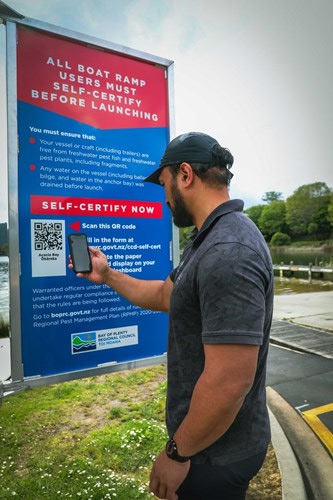The Bay of Plenty Regional Pest Management Plan 2020–2030 requires that all public boat ramp users certify that their boat is free from freshwater pest fish and weed where a self-certification checkpoint is present.
Everyone can play their part by following the rules.
- Don’t leave boat trailers in any water body unless you’re launching and/or retrieving boats.
- Don’t transport ballast water from any water body to any other location.
- Boat ramp users entering any Bay of Plenty water body must make sure their vessels or craft (including trailers) are free from freshwater pest fish and freshwater pest plants including fragments.
- Where there is a self-certification checkpoint, boat ramp users must complete a self-certification form before launching. The form must either be submitted electronically or displayed in the vehicle and left at the boat ramp where the boat was launched.
Biosecurity staff will be visiting public boat ramps throughout summer to help lake users understand the rules and check that they are complying with them. Lakeside self-certification checkpoints, with instructions, have been set up at boat ramps around the Rotorua Te Arawa lakes.



 Be a waterway hero – check, clean, dry, certify to stop the spread of freshwater pests in our lakes and rivers
Be a waterway hero – check, clean, dry, certify to stop the spread of freshwater pests in our lakes and rivers

